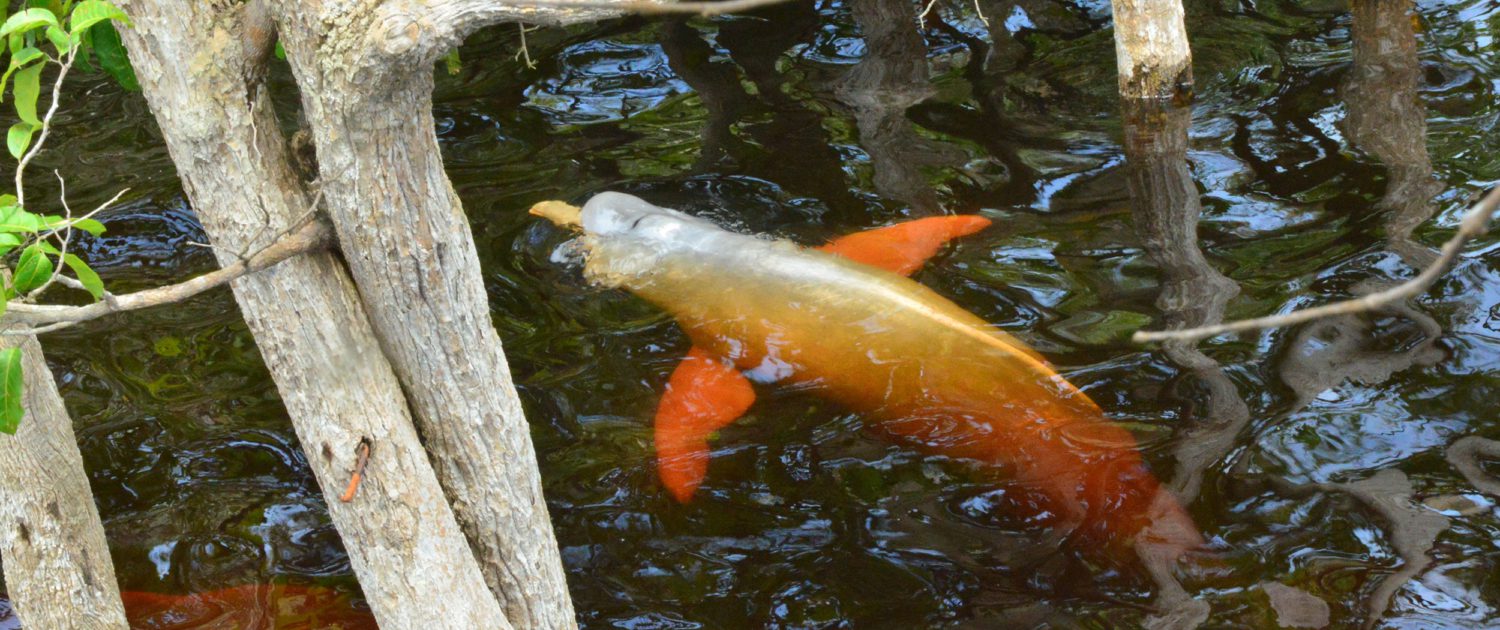On Oct 29, 2017, at the 22nd Society for Marine Mammalogy Conference in Halifax, Canada, the IUCN Marine Mammal Protected Areas Task Force held a one-day workshop on IMMAs in Freshwater Environments. The goal was to engage experts attending the biennial conference to discuss the identification and utilisation of the IMMA tool to enhance protection efforts for marine mammals in freshwater environments, including MPAs, Key Biodiversity Areas, and other area-based measures or instruments.
The workshop, convened by IMMA Coordinator Michael J. Tetley and Task Force member Gill Braulik, was attended by ten marine and freshwater mammal experts with knowledge of South American river dolphins, South Asian river dolphins, Yangtze finless porpoises, freshwater populations of Irrawaddy dolphins, and Baikal seals.
Three sessions were held at the workshop focusing on (I) an assessment of opportunities for IMMAs to assist in freshwater conservation efforts, (II) the identification of case studies (potential Areas of Interest or AoI) for informing a future process of designating IMMAs in freshwater systems, and (III) a discussion of conservation and management issues affecting freshwater species and habitats.
Marine mammal species that occur in freshwater environments, such as river dolphins, sirenians, and pinnipeds, present a slightly different scenario and application of the current IMMA Guidance than had been envisioned when that guidance was developed.
As highlighted during the River Dolphin Species Workshop held at the 2016 International Conference on Marine Mammal Protected Areas (ICMMPA4), the process to identify IMMAs within strictly inland and often freshwater-dominated environments requires further consideration and consultation with experts. In comparison to purely marine environments, inland freshwater habitats (riverine systems, freshwater lakes, and inland seas) are subject to differing ecological drivers, research considerations, and conservation management issues.
The workshop concluded that the IMMA selection criteria and process could be used successfully to identify important areas for freshwater species. A preliminary suggestion for the name of these inland IMMAs will be to use the term ‘Inland IMMAs’. It was further agreed that there was an apparent alignment (in both purpose and utility) between the IMMA and Ramsar Site selection criteria, and that an effort should be made to engage with individuals working within the Ramsar Convention and its site selection process.
It was recommended that mammal species that occur in habitats influenced by freshwater (such as lagoons, estuaries, and deltas) are appropriate for consideration within the Task Force’s marine-focused work plan for IMMAs, with some adaptations. In contrast, species that inhabit inland aquatic areas will be more appropriately assessed as part of a parallel IMMA process outside of the Task Force’s marine-focused work plan for IMMAs. No freshwater IMMA workshop has been planned yet, but various actions can be taken to prepare for this proposed parallel IMMA process.
For more information, please download the report.


